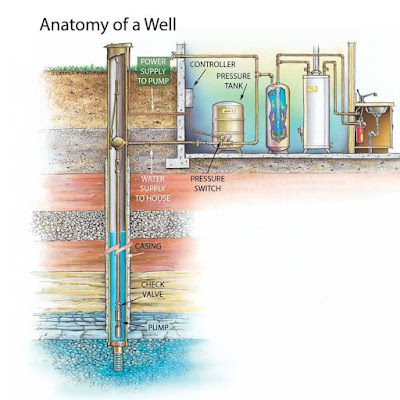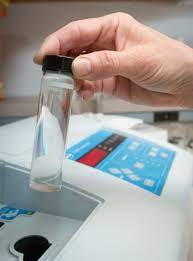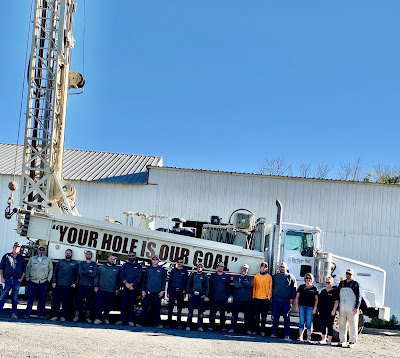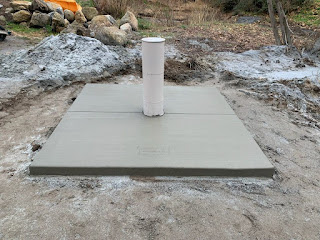How deep does my well need to be?
Well drilling depth recommendations are also formation dependent. If your property is in an area where you can drill using the air-hammer method of drilling your driller will be able to quantify the amount of water they are encountering the deeper they take the hole. This is because air-hammer drilling is only used in hard rock, granite, solid formations. This type of formation allows the driller to push high capacity air down the hole and measure the returns coming back up to give reliable information on how much the well is producing. Now, we don’t recommend you stop just because you hit the amount of water you are seeking when using this method of drilling. To get a long lasting well we recommend drilling a minimum of 60 ft below the water you encountered or as much as your budget will allow for. This will give you the ability to lower your pump in the future if the water table in your area drops for any reason rather than having to drill a completely new well.
The other type of formation that is frequently encountered in Southern California is soft sands and clays. This type of formation requires mud-rotary type drilling and leaves quite a bit more unknowns when drilling. As we mentioned with air-hammer drilling the driller is able to push high pressure air into the hole while drilling to measure returns and easily quantify the amount of water you have. With mud-rotary drilling this practice is not possible because there is not a hard surface for the air to collect the water. If a driller decides to push high capacity air into a well in this type of formation that doesn’t have casing he or she will blow a giant hole in the ground and could inevitably sink their rig with the large cavity that could be created. This type of drilling requires more skill and research to determine a depth in which to quit drilling based on wells in the surrounding area and the formation that the driller is logging. A highly knowledgeable drilling company should be able to read the formations they are drilling through and help you make a decision on whether or not to continue the hole or complete it.
Here at Heritage Well we spend a good amount of time researching every property before we provide a quote, so much so that we are willing to share our research. We can show you logs of wells that surround you and justify our reasoning for the construction recommendations we provide. We believe that a well is a significant investment with not only your money but your time as well. A well drilling project is a big endeavor and we want to not only protect your investment but also provide you with a well that will provide a reliable source of water for your family for years to come.
Interested in a quote? Give our team a call at 951-763-2210




Comments
Post a Comment